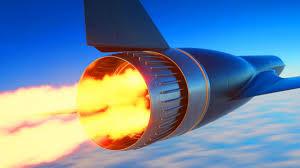China has stunned the global aerospace community with a groundbreaking achievement in hypersonic technology, successfully testing a jet engine capable of withstanding flight speeds up to Mach 16, equivalent to nearly 20,000 km/h. This marks a major leap in the global race for hypersonic supremacy.
Dubbed the Nanqiang No. 1, the advanced air-breathing ramjet engine reportedly survived extreme flight conditions during a test inside the cutting-edge JF-22 hypersonic wind tunnel in Beijing. At Mach 16, more than 20 times the speed of commercial aircraft, the engine endured blistering temperatures and crushing pressure without melting, a feat many engineers previously believed was nearly impossible.
Developed by China’s State Key Laboratory of High Temperature Gas Dynamics, a leading research center under the Chinese Academy of Sciences, this hypersonic propulsion system could have sweeping implications for both aerospace innovation and military superiority. Experts suggest that the successful test of Nanqiang No. 1 signals China’s ability to not only build ultra-fast aircraft but also usher in a new generation of spaceplanes, high-speed weapons, and global strike capabilities.
Related Articles:
- U.S, China finalize framework to implement Geneva trade consensus, easing tensions over rare Earths, export controls
- China to establish electric vehicle factories In Nigeria
- Wike arrives China over water project for FCT satellite towns
What makes this development even more significant is that the engine is an air-breathing design, meaning it uses atmospheric oxygen for combustion, making it more efficient and potentially more sustainable than traditional rocket systems. The fact that it withstood the punishing conditions of hypersonic travel without structural failure represents a revolutionary advance in materials science and thermal engineering.
China’s latest success is already drawing international attention, with analysts warning that it may accelerate the hypersonic arms race among global powers. While official details about the engine’s intended deployment remain classified, its potential for both civilian and military applications is undeniable.
From space exploration to defense systems capable of bypassing conventional missile shields, the Nanqiang No. 1 engine could redefine the boundaries of what is technologically possible. As China continues to push the limits of speed and engineering, the rest of the world is now playing catch-up in a rapidly evolving era of hypersonic dominance.






